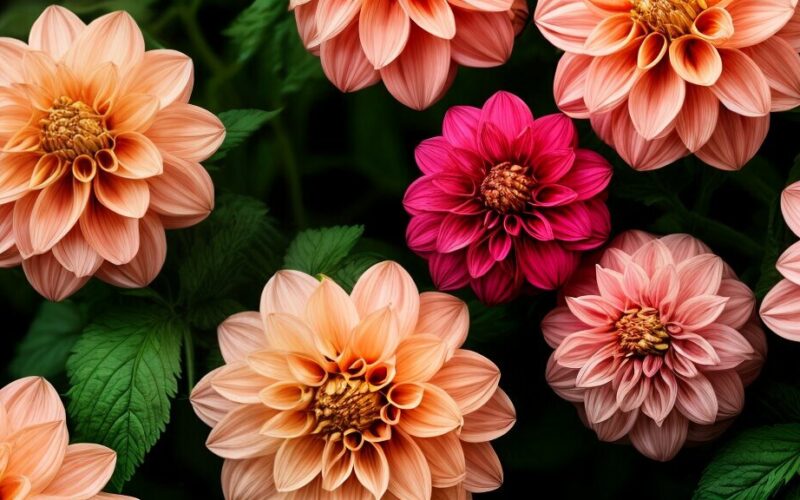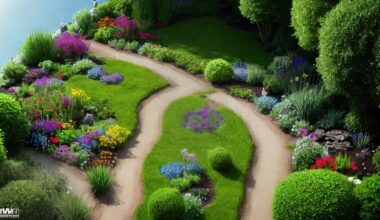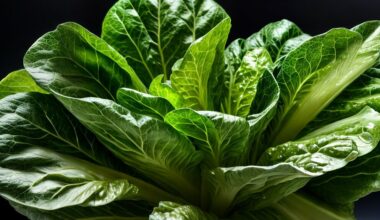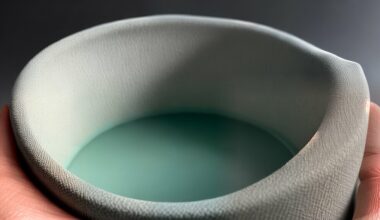If you are a dahlia enthusiast, you may wonder about the transformation process from dahlia seeds to tubers. You might even ask, “Do dahlia seeds turn into tubers?” The short answer is yes! But it’s essential to understand the growth process so you can cultivate healthy and robust dahlia tubers successfully.
Key Takeaways
- Dahlia seeds can transform into tubers, but it’s crucial to understand the growth process.
- Proper seed preparation, planting techniques, and ideal growing conditions all contribute to successful dahlia tuber production from seeds.
Understanding Dahlia Seed Germination
If you’re interested in growing dahlias from seeds, it’s essential to understand the process of dahlia seed germination. While it may seem daunting at first, with proper preparation and care, you can cultivate healthy dahlia tubers from seeds.
The first step in the process is to properly prepare your dahlia seeds. This involves ensuring that they are clean, dry, and of good quality. You can do this by purchasing seeds from a reputable source or by collecting them from established dahlia plants in your garden.
Tip: Before planting your seeds, you can also soak them in water overnight to improve the chances of successful germination.
When it comes to planting your dahlia seeds, you have a few options. You can plant them directly in the ground, but it’s essential to ensure that the soil is well-draining and free of weeds. Alternatively, you can start your seeds indoors in seed trays or small pots. This method allows for more control over the growing conditions and can help to protect your seedlings from pests and disease.
Tip: When planting dahlia seeds, it’s important not to bury them too deeply. A general rule of thumb is to plant them at a depth of about three times their diameter.
Once you’ve planted your dahlia seeds, it’s essential to provide them with the ideal growing conditions. This includes providing adequate sunlight, moisture, and nutrients. It’s essential to keep the soil consistently moist but not waterlogged, as this can lead to rot. Additionally, providing a balanced fertilizer can help to promote healthy growth and improve the chances of successful germination.
It’s important to note that dahlia seeds can be slow to germinate, and it may be several weeks before you see any signs of growth. However, with patience and proper care, your dahlia seeds will eventually sprout, and you’ll be well on your way to cultivating healthy dahlia tubers.
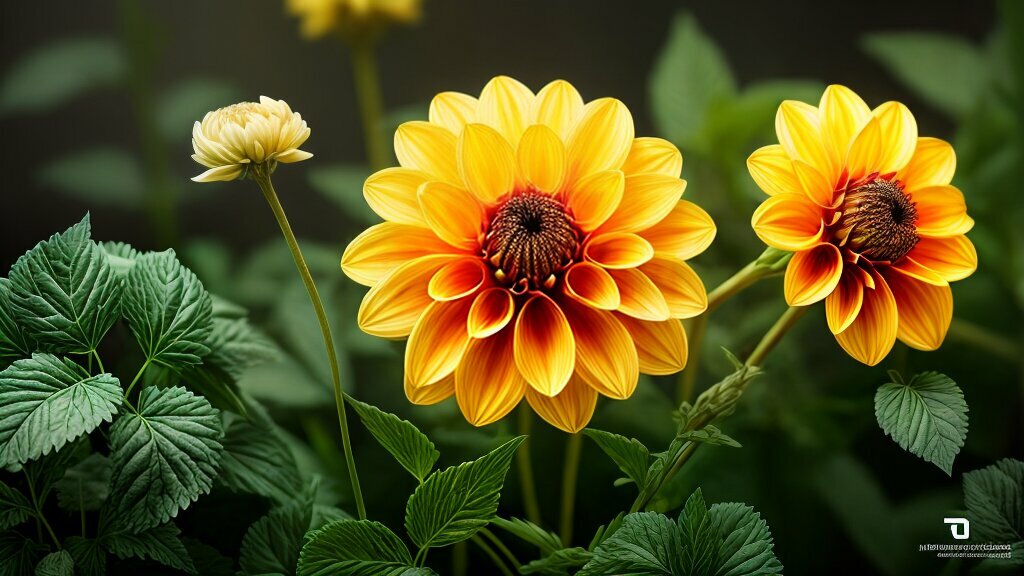
The Formation of Dahlia Tubers
When dahlia seeds germinate, they first begin to develop a root system and a stem, just like any other plant. However, instead of developing into a mature plant with flowers, dahlias undergo a transformation process where they convert from seedlings to tubers. This process usually takes several months.
During the formation of dahlia tubers, the stem of the plant begins to thicken and become bulbous. It is at this point that the tuber starts to store nutrients and energy for the plant to use during its dormant period. As the stem continues to thicken, it also forms eyes or bud nodes, which will eventually sprout into new shoots when conditions are right.
The formation of dahlia tubers is influenced by a variety of factors, including genetics, temperature, light, water, and nutrients. For example, dahlias tend to form larger tubers in cooler temperatures, while warmer temperatures can result in smaller tubers. Similarly, too much water or fertilizer can encourage foliage growth at the expense of tuber formation.
The Stages of Dahlia Seed Growth
There are several stages of dahlia seed growth that are important to understand in order to promote healthy tuber development:
- Seed Germination: This is the initial stage where the seed absorbs water and begins to sprout. It typically takes 1-2 weeks.
- Seedling Growth: This is the stage where the seedling develops leaves and begins to photosynthesize. It lasts for several weeks.
- Tuber Formation: This is the crucial stage where the plant converts from a seedling to a tuber. It can take several months to complete.
- Dormancy: This is the period where the plant goes into hibernation and the tuber remains underground until the next growing season.
Understanding these stages can help you determine the best time to plant, fertilize, and harvest your dahlias for optimal tuber growth and development.
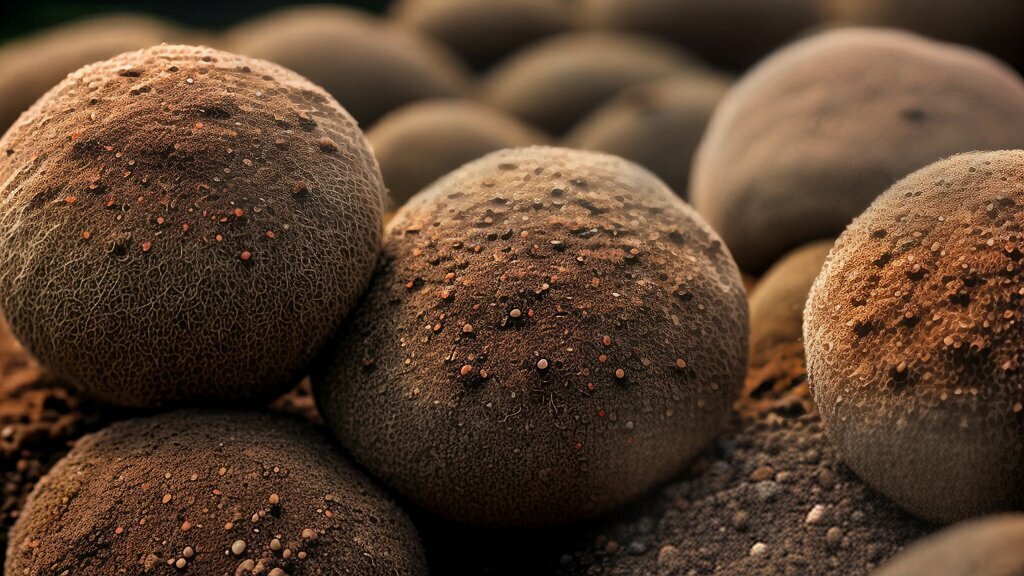
Tip: If you want to speed up the formation of dahlia tubers, consider planting seedlings in slightly cooler temperatures and reducing water and nutrients during the later stages of growth.
Dahlia Seedling to Tuber Conversion
When your dahlia seeds have germinated and grown into healthy seedlings, the next step is to encourage tuber formation. This process involves a series of physiological changes that occur within the plant as it matures and prepares for dormancy.
In order to promote tuber growth, it is important to provide your dahlia seedlings with consistent care, attention, and proper nutrition. Make sure they are planted in well-draining soil that is rich in organic matter and receives ample sunlight.
As your seedlings grow, you may notice the development of small nodules or bumps on the roots. These are the beginnings of tubers, which will continue to enlarge and mature over time.
One way to encourage tuber formation is by providing your plants with a balanced fertilizer that is high in phosphorus. This nutrient is essential for root and tuber development and can help to maximize the size and quality of your dahlia tubers.
In addition to fertilization, proper watering is also critical for tuber growth. Be sure to water your seedlings regularly and deeply, keeping the soil moist but not waterlogged. Avoid overwatering, as this can lead to root rot and other diseases.
Finally, it is important to monitor your plants for any signs of stress or disease, as these can significantly impact tuber formation and overall plant health. Look for yellowing leaves, wilting, or other symptoms that may indicate a problem, and take action as needed to address the issue.
By following these tips and guidelines, you can help to ensure a successful conversion from dahlia seedling to tuber, giving you the beautiful blooms you’ve been dreaming of.
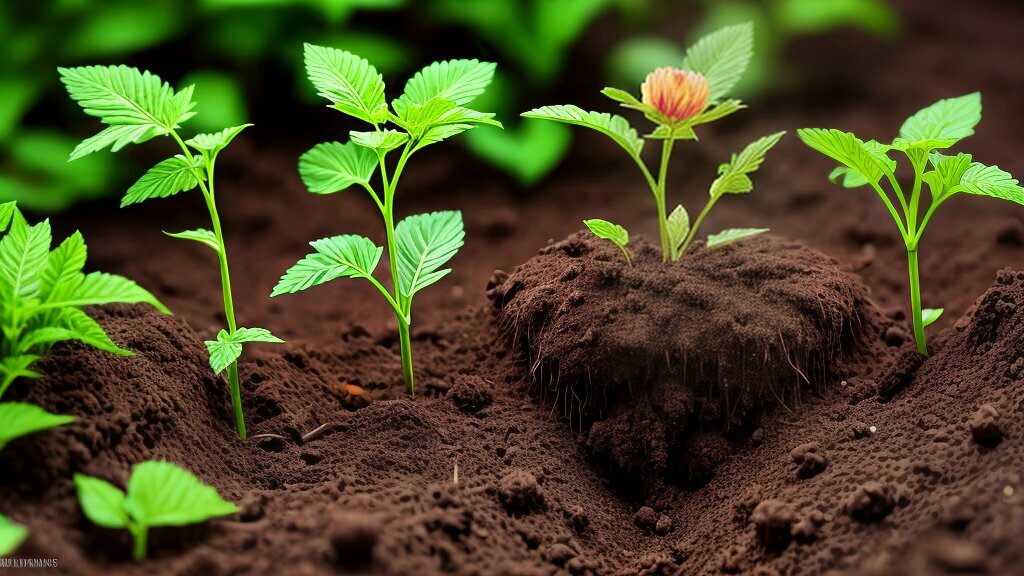
Organic Dahlia Tuber Production from Seeds
If you’re looking to produce organic dahlias from seeds, there are a number of strategies and practices you can employ to promote healthy growth and abundant tuber production. By adopting sustainable cultivation techniques and natural pest control methods, you can create a healthy and thriving garden ecosystem that supports your dahlias from seed to bloom.
One key aspect of organic dahlia tuber production is soil preparation. Start by selecting a well-draining location with plenty of sunlight exposure. Using compost, manure, and other nutrient-rich organic materials can help to boost soil fertility and promote healthy plant growth. It’s also important to avoid using chemical fertilizers and pesticides, which can harm beneficial insects and microorganisms in your garden.
Another effective strategy for organic dahlia tuber production is to incorporate natural pest control techniques. Companion planting with herbs and flowers that repel pests, such as garlic, basil, and marigolds, can help to keep harmful insects at bay. Additionally, using organic pest control methods such as neem oil, insecticidal soap, and diatomaceous earth can help to eliminate pests without the use of harmful chemicals.
To promote healthy tuber growth, it’s essential to provide your dahlias with the right balance of water and nutrients. Avoid overwatering, which can lead to root rot, and instead water your plants deeply and infrequently. Using naturally derived fertilizers such as bone meal, fish emulsion, and kelp meal can help to boost plant growth and encourage tuber formation.
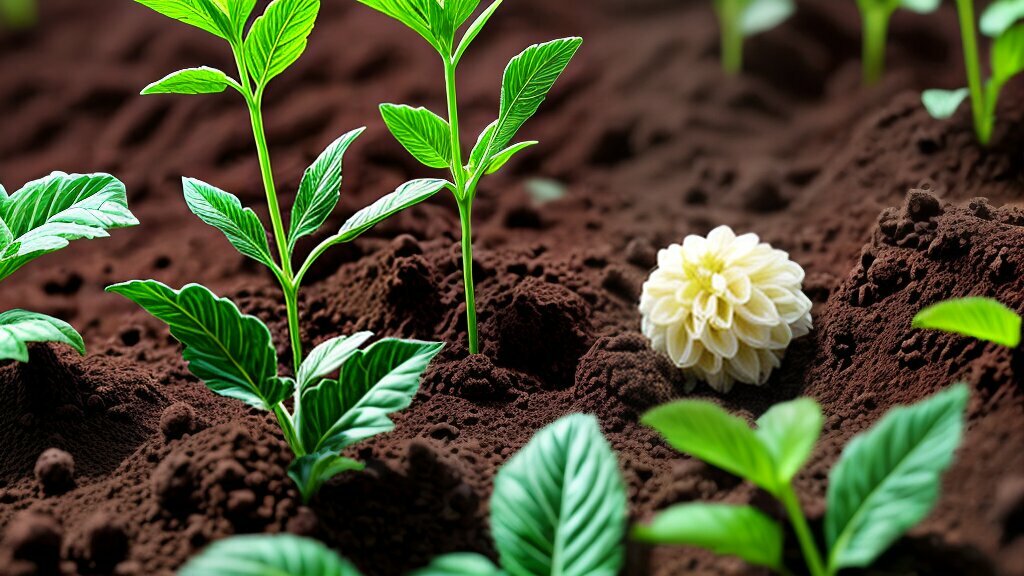
By following these organic gardening practices and techniques, you can achieve successful dahlia tuber production from seeds while also promoting a healthy and sustainable garden ecosystem. So, grab your gardening gloves and get ready to enjoy the beauty of dahlias from seed to tuber!
Tips for Successful Dahlia Seed to Tuber Transformation
Now that you understand the process of dahlia seed to tuber transformation, it’s time to put that knowledge into practice. Here are some practical tips to help you achieve success:
- Watering: Dahlia seeds require consistent moisture to germinate and grow properly. Keep the soil evenly moist but not waterlogged. Water deeply and infrequently to encourage root growth.
- Sunlight: Dahlia seedlings need plenty of sunlight to thrive, so choose a location that receives at least six hours of direct sunlight per day. If you’re starting seeds indoors, use grow lights to provide adequate light.
- Patience: Dahlia seeds can take up to four weeks to germinate, so don’t get discouraged if you don’t see growth right away. Be patient and keep the soil moist and warm until you see seedlings.
- Care: Once your dahlia seedlings have sprouted, take care not to disturb their delicate roots. Avoid transplanting until the seedlings have at least three sets of leaves. Provide regular nourishment with a balanced fertilizer.
- Observation: Watch your dahlia seedlings closely for signs of disease or pest infestation. Catching problems early can help prevent them from spreading and damaging your plants.
By following these tips and staying vigilant throughout the growth process, you can successfully transform dahlia seeds into beautiful, healthy tubers. Happy planting!
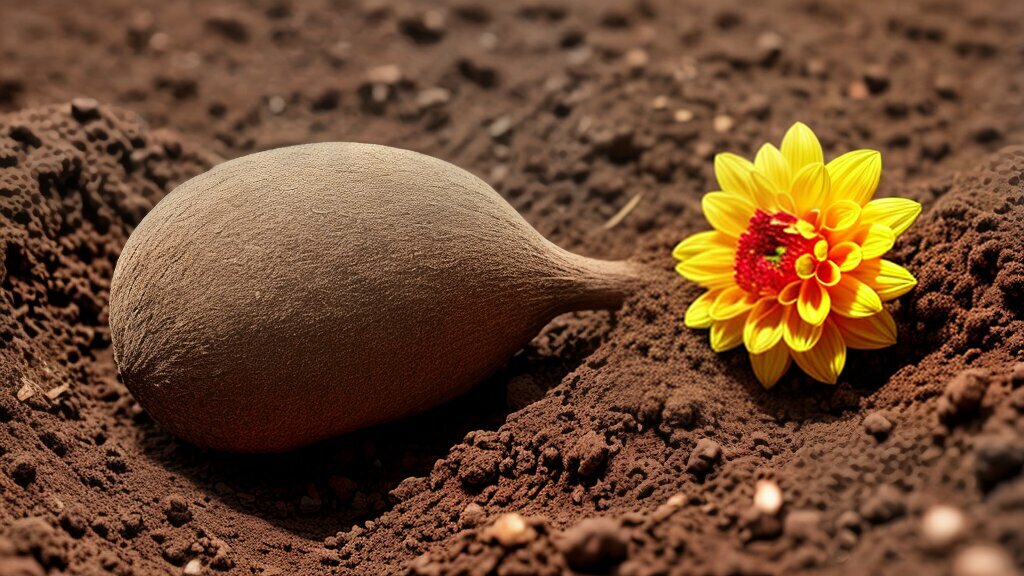
Common Challenges and Troubleshooting
As with any gardening endeavor, growing dahlias from seeds can present some challenges. Here are some common difficulties you may encounter and some tips for troubleshooting:
- Low germination rates: Ensure that you are using fresh, viable seeds and that they are properly stored in a cool, dry place. Also, consider using bottom heat to encourage germination.
- Damping-off disease: This fungal disease can cause seedlings to wilt and die. Prevent it by using sterilized soil, avoiding overwatering, and providing good air circulation.
- Poor tuber formation: If you are having trouble getting your seedlings to develop tubers, try providing them with more light, adjusting their watering schedule, and using a balanced, organic fertilizer.
- Damage from pests: Common pests that can damage dahlia plants include slugs, snails, and aphids. Use natural pest control methods such as hand-picking, companion planting, or diatomaceous earth.
Remember that growing dahlias from seeds takes patience and careful attention. Don’t be afraid to experiment with different techniques and find what works best for you. With practice, you’ll be rewarded with beautiful blooms and healthy tubers.
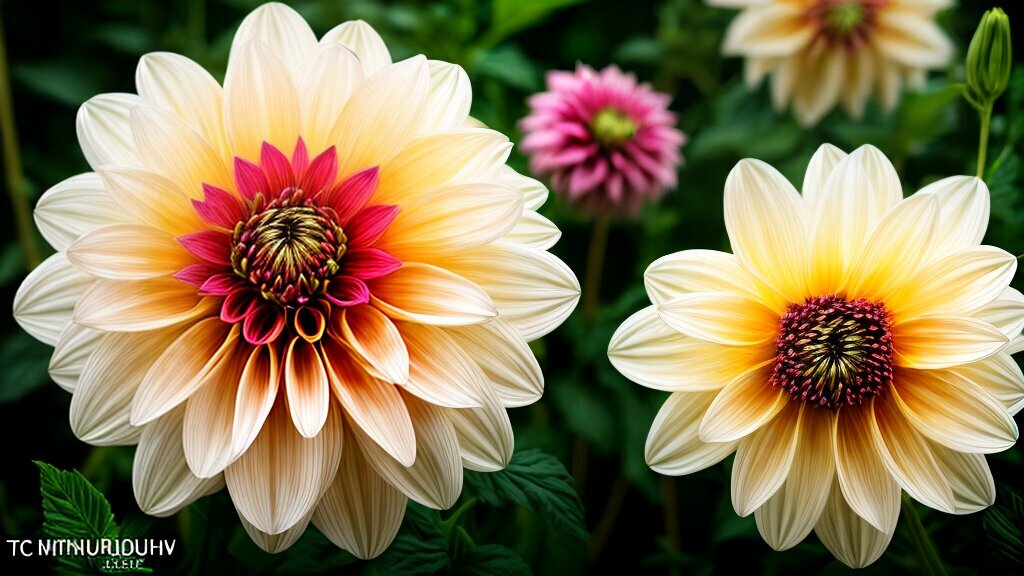
Conclusion
So, to answer the question, “Do dahlia seeds turn into tubers?” – yes, they do! But it’s important to understand the growth process and take proper care to ensure successful tuber formation. Remember, germinating dahlia seeds and cultivating tubers from them can be a rewarding experience. With the right techniques, you can produce beautiful organic dahlias while enjoying the satisfaction of growing them from seeds.
If you’re just starting out, don’t be discouraged by the challenges that may arise. With a little patience, observation, and troubleshooting, you’ll be well on your way to producing healthy, vibrant dahlias. And who knows, you may even become an expert in dahlia seed to tuber transformation!

